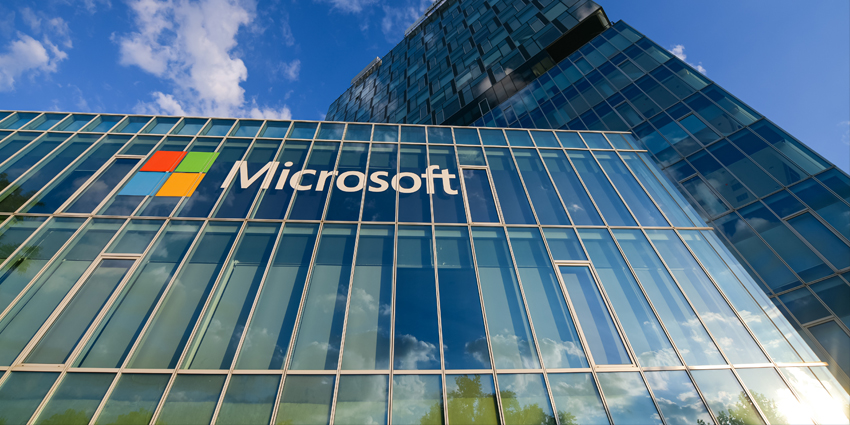Microsoft spent the second half of 2023 championing what it coined as the industrial Metaverse, specifically an umbrella of multi-user XR services covering enterprise use cases such as collaboration, design procedures, and employee training.
However, the new year is upon us, as is Microsoft’s industrial Metaverse roadmap, with the first of its products coming this month. How will its vision fare in an increasingly competitive 2024 market? Soon, the firm will launch its first set of industrial Metaverse applications and services following a significant showcase at Ignite 2023.
On the other hand, and more recently, reports are emerging suggesting that Microsoft is shutting down a key component of its XR portfolio – casting some pundits in doubt.
Late last year, Microsoft revealed that it was shutting down its Windows Mixed Reality Platform and removing it from upcoming versions of the general Windows OS. The news comes after years of Microsoft supporting the service that gave PC headset users an option to leverage the platform to run AR/VR/MR applications.
It now appears that Windows is dropping the service in place of a more bespoke adoption of SteamVR, a majorly popular service for loading and streaming PCVR applications on a range of headsets – namely the Quest 2.
The news also brings doubts towards the Hololens 2, which has made many XR enthusiasts pessimistic about the device’s future following two years of hurdles and controversies. Last year, Microsoft also shut down its long-standing Metaverse platform Altspace VR, transferring some of its development team towards its Mesh platform.
Will the loss of Windows Mixed Reality lead to a lull in XR products from the firm? Not likely. The firm appears to be refining its XR products, leading towards the roll-out of its industrial Metaverse platform, namely supporting its Mesh product, which is the 3D platform supporting its upcoming VR/MR services.
More on Microsoft’s Industrial Metaverse Today
During Ignite 2023, Microsoft CEO Satya Nadella spoke on the relationship between AI and MR, noting how emerging technology affects real-world enterprise use cases with the CEO claiming that “it’s pretty amazing when you bring these two technologies (AI/MR) together and this stuff is real today its has been deployed in preview at Siemens Energy, Chevron – it’s great to see the power, and I think it’s going to be even more powerful in the years to come.”
Microsoft has announced that it will release new avatars for its Teams application in January 2024. Microsoft is introducing a suite of no-code tools and integrated Unity features to power the avatar system, allowing enterprise customers to create immersive spaces such as employee events, training, tours, and product showcases that can be customized to meet their business needs.
XR project managers can choose from various pre-built immersive environments available on the Mesh platform and use no-code/Unity tools to personalize the space for an entire organisation. As the January 2024 general availability release approaches, Microsoft will reveal more information about the Mesh for enterprise service, including additional features such as speaker enhancements, attendee engagement options, and interaction.
Moreover, Microsoft has updated its Dynamics 365 platform, incorporating advanced technologies like AI, MR, IoT, and others, to offer users new Metaverse features that provide augmented reality services rather than wholly transformative ones.
Furthermore, frontline workers using Hololens and Dynamics 365 can now access work order information by communicating with Copilot through Microsoft Teams. Additionally, Dynamics 365 Field Service customers can now access Dynamics 365 Guides and Dynamics 365 Remote Assistance for free.
Moreover, after years of waiting, Microsoft brought some Office applications to Quest last month, marking a significant partnership between the two firms to deliver competitive spatial computing productivity solutions.
Microsoft’s Industrial Metaverse, a Bumpy Journey
In June 2022, reports of unethical behaviour within Microsoft’s Hololens team resulted in the resignation of Alex Kipman, the former Head of Hololens and MR; following this, managing and developing Hololens projects shifted to Microsoft’s Windows & Devices division, with several Hololens engineers moving to Meta.
Microsoft’s Vice President of MR, Scott Evans, confirmed that the company was still working on immersive services, even after a shake-up, while revealing that a new version of Hololens was being developed, which would be launched once the technology was ready – but the clock is ticking. It has been for some time now.
Microsoft stated that it would only release a new headset once it offered significant performance improvements compared to previous models, emphasizing that customers did not want a successor with only slight improvements.
To ensure the success of the next device, Microsoft is currently examining the specifications and challenges faced by clients that can be addressed by the Hololens 3, including display, tracking, sensors, and battery life.
The months following is when Microsoft first hinted at an industrial Metaverse initiative as part of its AI Cloud Partner Program to drive growth and innovation towards enterprise-grade AI. As part of this program, Microsoft supports developing industrial Metaverse solutions and related technologies.
Microsoft is investing in the industrial Metaverse, but it’s not its only XR investment. Microsoft is still working on HoloLens 2 support for enterprise clients. With their OpenAI partnership, Microsoft seems to be keeping up with the emerging technology landscape to provide innovative business solutions.
Read the full article here

